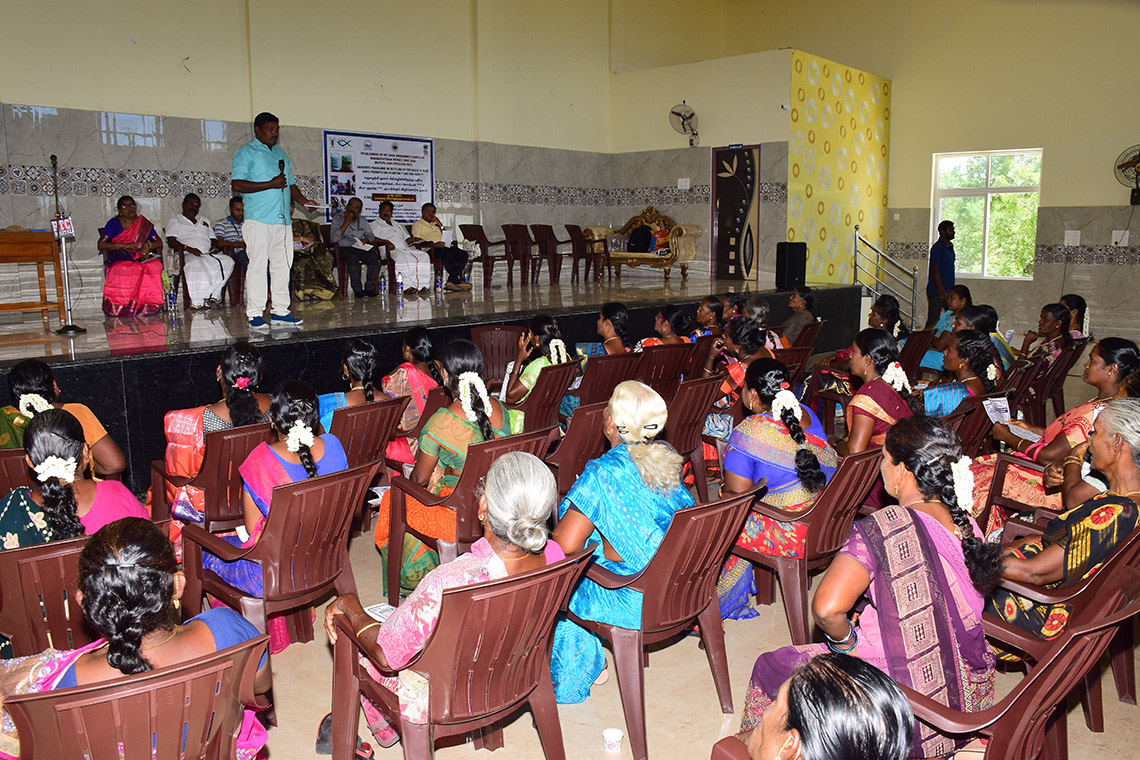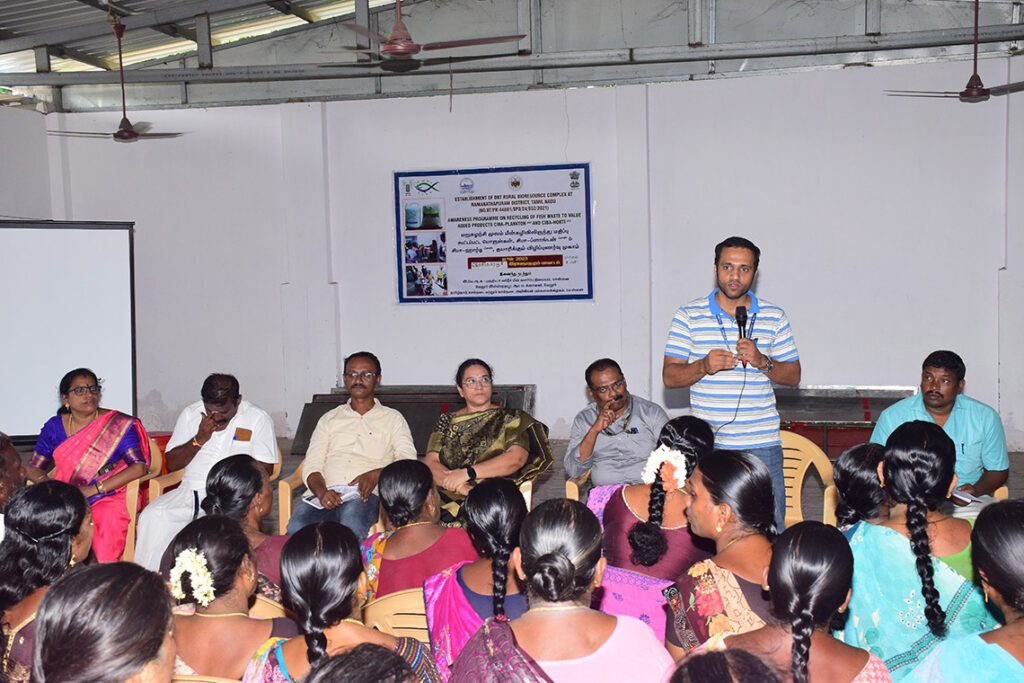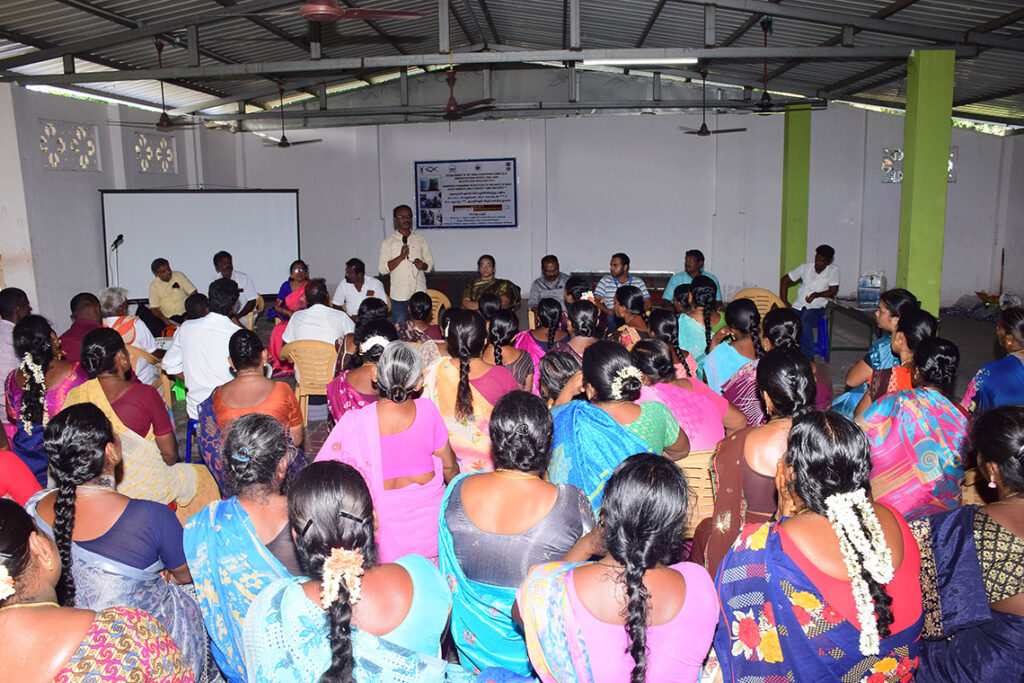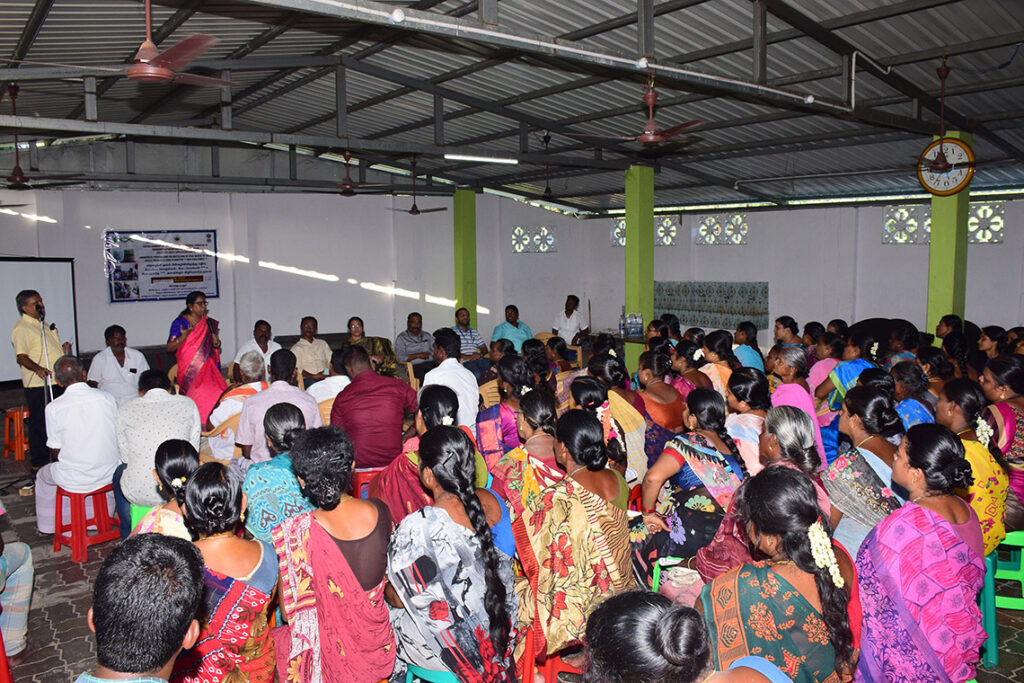ICAR-Central Institute of Brackishwater Aquaculture (ICAR-CIBA), Chennai, organised two awareness programs in collaboration with Vellore Institute of Technology (VIT), Vellore, Tamil Nadu, Department of Fisheries, Rameswaram Sigaram Fish Farmers Producer Organisation, Ramanathapuram, on “Recycling of fish waste to value added products, CIBA-Planktonplus and CIBA-Hortiplus among coastal communities” at Mangadu and South Karaiyur villages, Ramanathapuram district, Tamil Nadu on 28th June 2023. About 260 villagers participated in the programme along with Department of Fisheries officials, FFPO officials, farmers, panchayat leaders, Self Help Group members, VIT staff, and scientists from ICAR-CIBA, Chennai. CIBA-Plankton Plus is a value added product developed from fish waste and trimmings. It helps in maintaining a healthy phytoplankton and zooplankton bloom in shrimp and fish culture, reduces the requirement of formulated feed without affecting growth and production performance. CIBA-Hortiplus can be used as nutrient rich manure for agriculture/horticulture. Both the programs were organised with funding support from Department of Biotechnology, Ministry of Science & Technology, New Delhi under the project entitled “Establishment of DBT rural bio-resource complex at Ramanathapuram district, Tamil Nadu”.
Dr. A. Sakthivelu, professor, VIT, Vellore, welcomed the gathering. Dr.P.Mahalakshmi, Principal Scientist & PI of the project, ICAR-CIBA, Chennai, narrated the demonstration and extension activities conducted in various coastal states by ICAR-CIBA for different stakeholders for enhancing their livelihood through fish waste to value added products. She also sensitized the participants about the importance of backwater resources and its conservation for enhancing the livelihood security of fishers in the region. She emphasised the need for collaborative work among the institutions to strengthen the activities in achieving environment friendly disposal of fish market wastes in Ramanathapuram district. Dr.K.P.Sandeep, Scientist, CIBA, presented the protocol for recycling of fish wastes to value added products and their usage in aquaculture and agriculture and their marketing potential.
Shri.T. Kennit Raj, fish farmer and proprietor of V.S. Fish Waste Hydrolysate, Kasimedu and Nammbikkai Fish Farmers Group, Pattinapakkam, Tamil Nadu, shared his experience about the establishment of fish waste processing unit at Nambikkai Nagar and Kasimedu, Chennai, under the technical guidance and support of CIBA for the production of CIBA-Planktonplus and CIBA HortiPlus, recycling of fish waste to value added products. He also cherished the efforts of CIBA, in promoting of waste to wealth concept as an alternative livelihood activity for the fishers which has improved their socio-economic status. He expressed that they received “Best Fisheries Self Help Group- 2020” from National Fisheries Development Board (NFDB), Ministry of Fisheries, Animal Husbandry and Dairying, Government of India for producing CIBA-Planktonplus and CIBA HortiPlus from fish waste.
Mr. V.Abdul Kadhar Jaylani, Assistant Director, Dept. of Fisheries, Rameshwaram, highlighted that this initiative is not only cleaning and hygienic disposal of fish market waste which is abundantly available in the village cluster but also will help to produce wealth from waste. He also highlighted the importance of cleanliness in the villages and recycling of fish and domestic waste to avoid infections and diseases.
CIBA Scientists informed the gathering that CIBA is going to establish training cum demonstration unit in collaboration with VIT at Ramanathapuram near fish waste accessible location based on the need and interest shown by the fish farmers. CIBA Scientists also informed the gathering that Dr. Kuldeep K.Lal, Director, ICAR-CIBA had emphasized to promote the zero-waste model in the fish markets across the country. The meeting concluded with the vote of thanks by Dr. J Paul Mansingh, Professor, VIT, Vellore. Dr.P.Mahalakshmi and Dr.K.P.Sandeep coordinated the event and clarified the queries raised by the participants.
Night mode




